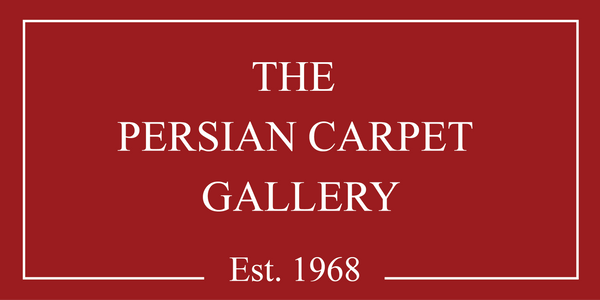Blogs
Silk Kilim from the Thyssen-Bornemisza Collection, Lugano
The Silk Kilim from the Thyssen-Bornemisza Collection in Lugano, Switzerland, is a rare 17th-century Safavid-era Persian kilim from Kashan, Central Persia. Also known as the Figdor Kilim, it is a tapestry-woven masterpiececrafted with silk and silver-threaded silk weft, measuring 197 x 129 cm (78 x 51 inches).
This exquisite kilim features elongated medallions filled with intricate animal motifs, some depicting animals in dynamic interactions. The surrounding arabesque border enhances its elegance, distinguishing it from other Kashan kilims. Considered one of the earliest Safavid kilims, it showcases advanced Persian weaving techniques and reflects the artistic excellence of the Safavid dynasty.
Now housed in the Thyssen-Bornemisza Collection, this silk kilim remains a priceless artifact, representing the pinnacle of historical Persian textile artistry.
Silk Kilim: 17th-Century Persian Masterpiece at the Textile Museum, Washington, D.C.
The Silk Kilim at the Textile Museum, Washington, D.C., is a rare 17th-century Persian tapestry-woven rug from Kashan or Isfahan. Made with a silk warp and silk and gold/silver weft, it showcases exceptional craftsmanship with 112 warp threads per 10 cm. Its intricate design features a phoenix and dragon in combat, cranes in flight, and mythical kylins, alongside various animals in its borders. Similar pieces exist in Berlin's Islamisches Museum and the Metropolitan Museum of Art, New York. Textile expert M.S. Dimand attributes it to an Isfahan workshop, highlighting the rich Persian weaving heritage.
Kashan's 17th-Century Silk Kilim
The 17th-century Silk Kilim from Kashan is a remarkable Persian textile masterpiece, now housed in the Österreichisches Museum für angewandte Kunst (MAK), Vienna. Woven entirely from silk, this exquisite kilim showcases the exceptional craftsmanship of Kashan’s artisans during the Safavid dynasty. Its intricate design, resembling a Persian miniature painting, features delicate floral patterns, human figures, and winged motifs. As one of the finest examples of Persian flatweave art, this kilim highlights the rich heritage of kilim weaving, which predates knotted rugs. A true testament to Persian artistic excellence, it remains an invaluable historical artifact.
Silk Carpet with Arabesques in The Victoria and Albert Museum in London
The Silk Carpet with Arabesques, originating from Central Persia in the early 17th century, is a stunning example of Safavid-era craftsmanship. Currently housed in the Victoria and Albert Museum, London, this luxurious carpet features 400,000 knots per square meter, with a silk warp, silk weft, and a silk pile enriched with gold and silver threads.
Belonging to the ‘Polonaise’ carpet group, its name stems from a historical misattribution in 1878, when several Persian rugs from the Polish Prince Czartoryski’s collection were mistakenly believed to be of Polish origin. Although scholars corrected this by 1891, the term ‘Polonaise’ persists.
Experts debate its precise origin, with Arthur Upham Pope suggesting it was woven in Joshagan, though its design sets it apart from other carpets in the same category. This masterpiece remains a testament to the artistic and technical brilliance of 17th-century Persian weavers.
Silk Medallion Carpet – A Masterpiece of Kashan in Nationalmuseum, Munich
This exquisite 16th-century Kashan silk carpet, housed in the Bayerisches Nationalmuseum, Munich, is a rare example of Persian weaving mastery. Measuring 244 x 150 cm, it boasts an extraordinary 810,000 knots per square meter, crafted entirely from silk.
What makes this piece unique is its wide border with large palmettes, surrounding a striking central medallion, and the absence of an outer guard band, creating a seamless design. Floral motifs blend harmoniously with Chinese-inspired elements, reflecting cultural influences of the Safavid era.
Among only a few surviving examples worldwide, this rug remains a testament to the luxury, technical brilliance, and artistic heritage of Persian craftsmanship.
The Silk Medallion & Arabesque Carpet: at the Musée des Gobelins, Paris
The Silk Medallion and Arabesque Carpet is a 16th-century Persian masterpiece from Kashan, currently housed in the Musée des Gobelins, Paris. Woven entirely from luxurious yellow silk, it boasts an exceptional knot density of 998,400 knots per square meter, showcasing the extraordinary craftsmanship of the Safavid era. The design features a central medallion with intricate arabesques and floral motifs, surrounded by a rich red field adorned with stylized clouds and flowers. Its three-band border, with varying widths, highlights delicate arabesques interwoven into a floral seed pattern.
This rug is part of an elite group of 16th-century silk carpets, considered among the finest ever created. A similar piece resides in the Metropolitan Museum of Art, reinforcing its historical and artistic significance. Persian silk carpets from Kashan were often crafted for royal courts, prized for their exquisite detail and luminous silk textures. Today, they remain highly sought-after as both artistic treasures and cultural heirlooms, embodying the grandeur of Persian textile heritage.






